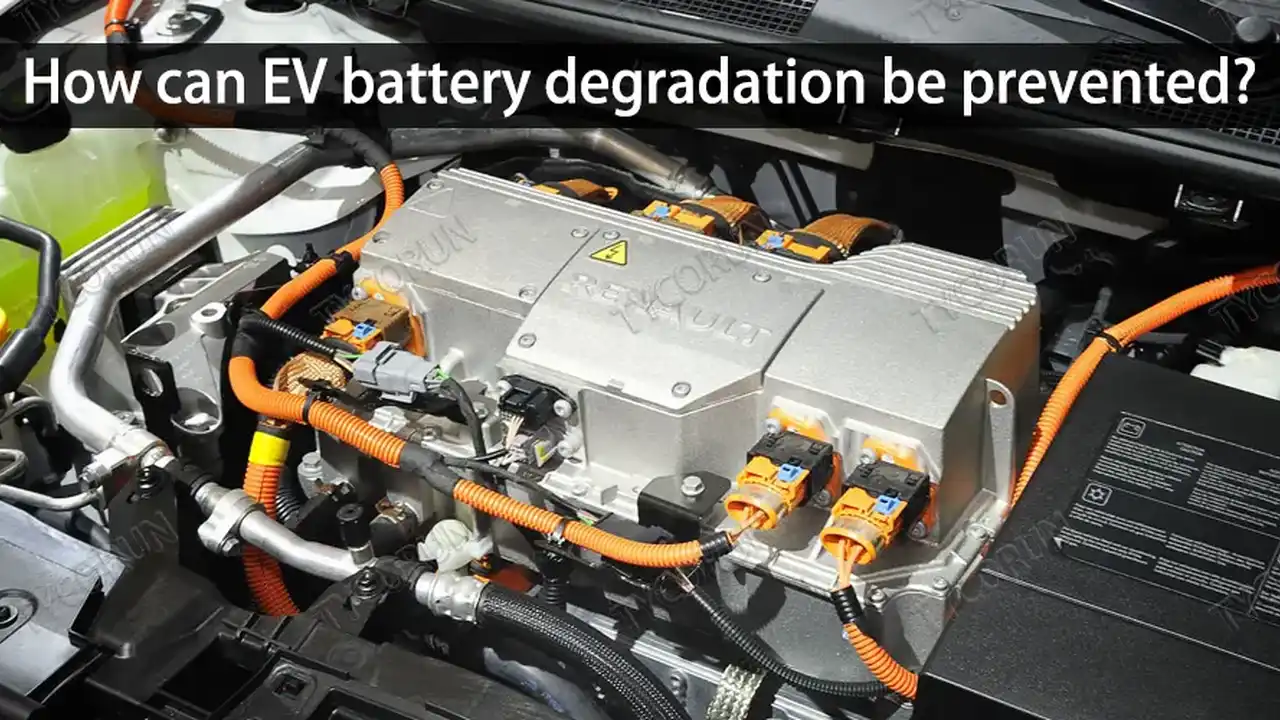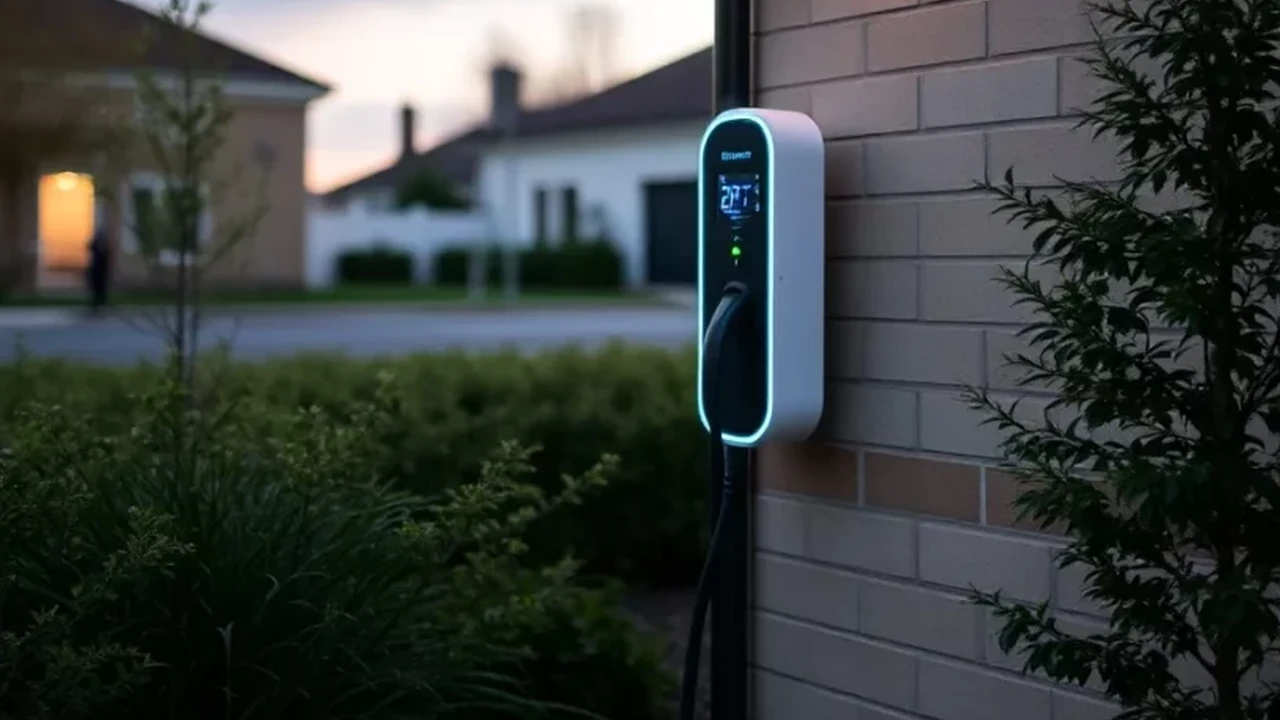EV Battery Degradation: What to Expect and How to Minimize It

Understand EV battery degradation and its impact on your vehicle's performance. Learn about the factors that contribute to battery wear and tear. Discover effective strategies to minimize degradation and extend your EV's battery lifespan.
Understanding EV Battery Degradation The Science Behind It
Okay, let's talk about something every EV owner thinks about eventually: battery degradation. It's the natural process where your battery loses some of its capacity over time. Think of it like your phone battery – it doesn't hold a charge as long as it used to after a few years, right? Same deal with EVs, but on a bigger scale.
So, what causes this degradation? Well, it's a combination of factors. One biggie is cycling – that's the repeated charging and discharging of the battery. Every time you juice up and use your EV, it puts a little stress on the battery cells. Heat is another major culprit. High temperatures, especially when charging, can accelerate degradation. And then there's just plain old time. Even if you barely drive your EV, the battery will slowly degrade over the years. It's just the nature of the chemistry.
Here's a simplified breakdown of the science: EV batteries are typically lithium-ion, similar to those in your phone or laptop, but much larger and more complex. Inside, there's an anode, a cathode, and an electrolyte. Lithium ions move between the anode and cathode during charging and discharging. Over time, this process causes physical and chemical changes within the battery. Lithium plating (formation of metallic lithium on the anode), electrolyte decomposition, and changes in the electrode structure all contribute to capacity loss and increased internal resistance.
In simple terms, imagine the battery as a sponge. When it's new, it can soak up a lot of water (energy). As it ages, the sponge's structure breaks down, and it can't hold as much water anymore. That's essentially what's happening with your EV battery.
Factors Affecting EV Battery Life Temperature Charging Habits and Usage
Let's dive deeper into the specific factors that influence how quickly your EV battery degrades.
- Temperature: As mentioned earlier, heat is a battery's enemy. Extreme heat (especially above 90°F or 32°C) accelerates degradation. Cold temperatures, while not as damaging long-term, can temporarily reduce range. Think of it like this: heat makes the battery work harder, while cold slows down the chemical reactions inside.
- Charging Habits: How you charge your EV can significantly impact battery life. Regularly charging to 100% and leaving it there for extended periods puts stress on the battery. Similarly, frequently using DC fast charging can also accelerate degradation compared to Level 2 charging. The ideal range is usually between 20% and 80% state of charge for daily use.
- Driving Habits: Aggressive driving, like rapid acceleration and hard braking, requires more energy and puts more strain on the battery. Consistent, smooth driving is much gentler on the battery.
- Mileage: The more you drive, the more you cycle the battery, and the more it degrades. It's a simple equation.
- Vehicle Age: Even with minimal use, a battery will slowly degrade over time due to calendar aging. The chemical reactions inside continue to occur, even when the battery isn't being actively used.
How Much Degradation Can You Expect Real World Examples and Data
Okay, so you know *why* batteries degrade, but how much can you actually expect? This is where it gets a little tricky because it varies depending on the EV model, battery chemistry, driving habits, and climate. However, there's a growing body of real-world data to give you a general idea.
Generally, most EVs experience around 2-3% battery degradation per year for the first few years. This rate often slows down as the battery ages. Some studies have shown that after 100,000 miles, many EVs still retain over 90% of their original battery capacity. Tesla, for example, has published data showing that their batteries typically retain around 90% capacity after 200,000 miles.
However, it's crucial to remember that these are averages. Some EVs will experience more degradation, while others will experience less. For example, EVs driven in hot climates, like Arizona or Nevada, tend to show higher degradation rates compared to those driven in milder climates.
You can find plenty of anecdotal evidence and data points online from EV owners sharing their experiences. Websites like Recurrent Auto (recurrentauto.com) provide detailed reports on EV battery health based on real-world data from thousands of vehicles. These resources can give you a more specific idea of what to expect for your particular EV model.
Strategies to Minimize EV Battery Degradation Tips and Best Practices
Alright, let's get to the good stuff – what can *you* do to minimize battery degradation and keep your EV running strong for years to come?
- Avoid Extreme Temperatures: Park in the shade during hot days and use preconditioning features to warm up the battery in cold weather. Preconditioning heats or cools the battery to its optimal temperature while plugged in, reducing the strain on the battery during driving.
- Optimize Charging Habits: Avoid regularly charging to 100% and discharging to 0%. Aim to keep the battery between 20% and 80% for daily use. Use scheduled charging to limit charging to specific times and avoid leaving the battery at 100% for extended periods.
- Use Level 2 Charging When Possible: Level 2 charging is gentler on the battery than DC fast charging. Reserve DC fast charging for long trips when you need a quick boost.
- Drive Smoothly: Avoid aggressive acceleration and hard braking. Smooth, consistent driving is much easier on the battery and helps maximize range.
- Store Your EV Properly: If you're storing your EV for an extended period, keep the battery at around 50% charge. Avoid storing it in extreme temperatures.
- Consider Battery Management Systems (BMS): Modern EVs have sophisticated Battery Management Systems (BMS) that help protect the battery from overcharging, over-discharging, and overheating. Trust the BMS to manage the battery effectively.
Recommended Products for EV Battery Health Monitoring and Maintenance
While you can't completely prevent battery degradation, you can monitor its health and take steps to mitigate its effects. Here are a few products that can help:
- OBD2 Scanners with Battery Health Monitoring: Some OBD2 scanners can provide data on battery voltage, state of charge, and other parameters. This can help you track changes in battery health over time.
- Product Recommendation: The Bluedriver Bluetooth Pro OBDII Scan Tool is a popular choice. It provides comprehensive diagnostics and can display battery-related data through its mobile app. Price: Around $120.
- Usage Scenario: Regularly check your battery voltage and state of charge to identify any potential issues early on.
- Comparison: Compared to cheaper OBD2 scanners, the Bluedriver offers more advanced diagnostics and data logging capabilities.
- Battery Cooling Systems (for extreme climates): While not widely available as aftermarket products, some companies are developing battery cooling systems for EVs in hot climates. These systems use active cooling to keep the battery temperature within a safe range. (Currently, this is more relevant for manufacturers to implement, but keep an eye on the aftermarket).
- Apps and Services for Battery Health Tracking: Several apps and services, like Recurrent Auto, can track your EV's battery health based on real-world data. These services often provide reports on expected range and degradation based on your driving habits and climate.
- Service Recommendation: Recurrent Auto Reports provide detailed insights into your EV's battery health. Price: Varies depending on the report.
- Usage Scenario: Use Recurrent Auto Reports to get a comprehensive assessment of your battery's health and expected range.
- Comparison: Recurrent Auto provides data-driven insights based on a large sample size, making it more reliable than anecdotal evidence.
Comparing Different Battery Chemistries NMC vs LFP
EV batteries aren't all created equal. Different battery chemistries have different characteristics, including degradation rates. The two most common chemistries are NMC (Nickel Manganese Cobalt) and LFP (Lithium Iron Phosphate).
- NMC Batteries: NMC batteries are known for their high energy density, meaning they can store more energy for a given size and weight. They're commonly used in EVs that prioritize range and performance. However, NMC batteries tend to degrade slightly faster than LFP batteries.
- LFP Batteries: LFP batteries are known for their longer lifespan, improved thermal stability, and lower cost. They're becoming increasingly popular in EVs, especially those that prioritize durability and affordability. LFP batteries can also be charged to 100% more frequently without significantly impacting their lifespan.
In general, LFP batteries are considered to be more robust and resistant to degradation compared to NMC batteries. However, NMC batteries still offer advantages in terms of energy density and performance. The best choice depends on your specific needs and priorities.
Warranty Coverage for EV Batteries What You Need to Know
Finally, let's talk about warranty coverage. EV manufacturers typically offer generous warranties on their batteries, often covering them for 8 years or 100,000 miles (or more). These warranties typically cover significant battery degradation (usually defined as a loss of more than 20-30% of original capacity). However, it's crucial to read the fine print of your warranty to understand exactly what's covered and what's not.
For example, some warranties may not cover degradation caused by abuse or misuse (like regularly charging to 100% and leaving it there). Others may only cover degradation that occurs within a specific temperature range. Make sure you understand the terms of your warranty so you know what to expect.
So, there you have it! A comprehensive look at EV battery degradation, from the science behind it to the strategies you can use to minimize its effects. Keep these tips in mind, and you can help ensure that your EV battery lasts for many years to come.
:max_bytes(150000):strip_icc()/277019-baked-pork-chops-with-cream-of-mushroom-soup-DDMFS-beauty-4x3-BG-7505-5762b731cf30447d9cbbbbbf387beafa.jpg)




 for EVs: Safety Features.webp)

